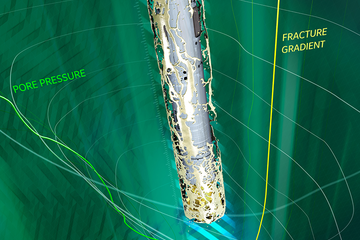Overview
Challenges
- Narrow operational window
- Highly deviated wells
- Uncertain geological information
- Excessive downhole losses during casing runs
Results
- Reduced pressure on the formation while drilling
- Lowered downhole surge pressures and ECD, downhole losses, NPT, and associated costs
- Preserved wellbore integrity by reducing pressure spikes
- Decreased time to run casing by reducing downhole losses
A customer in the Norwegian sector of the North Sea needed to drill and navigate through complex geological formations and a low fracture gradient, where maintaining low equivalent circulating density (ECD) was essential in protecting the formation against excessive hydraulic pressure.
The DELTA-TEQ low-pressure-impact drilling fluid, from Baker Hughes, was chosen for the job because of its highly stable properties and ideal rheology for low hydraulic impact. The DELTA-TEQ fluid was formulated to reduce hydraulic impact on the wellbore, minimize the delta between static and circulating density, protect against surges, and ensure that solids remain in suspension to avoid sag issues.
Traditional challenges in offset wells include a very narrow operating window, hole cleaning complications, and excessive downhole losses while running and cementing the liner.
The objectives for Baker Hughes were:
Deliver low ECD margins
Minimize the risks associated with drilling a 7,874 ft (2 400 m) section through the overburden
Successfully drill into a reservoir with a low fracture gradient, ranging from 14.99 to 14.56 lbm/gal (1.80 to 1.75 sg), and a complex geological formation
Download the PDF to read the full case study.


